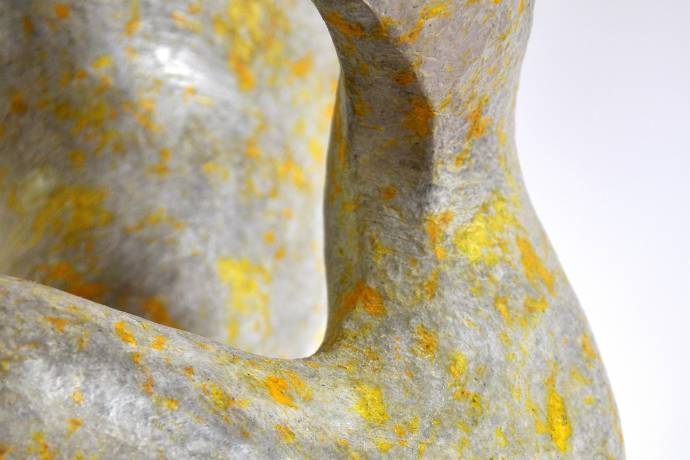Garbage bag
More than thirty years later, he still works with this material. In addition to newspapers and leaflets, he uses his own household waste such as plastic packaging, broken pens and even an old thermos flask. Everything from his own garbage bag that doesn’t spoil. This makes him unique.
Environment
With his work, he also calls attention to the environment. It shows his ecological footprint. Visser: “Think of it as a silent protest against the consumer society.’’
Shapes
Special about his sculptures is that you can look at them on so many levels. First of all there are the forms and the material that are reminiscent of stone, bronze and ceramics. You don’t see what you think you are seeing.
Gold
Then there is the cycle, the recycling, the awareness that you are looking at 100% waste. “My waste is gold,” says Visser. “The groceries come in through the front door and the packages go out in the shape of art.”


